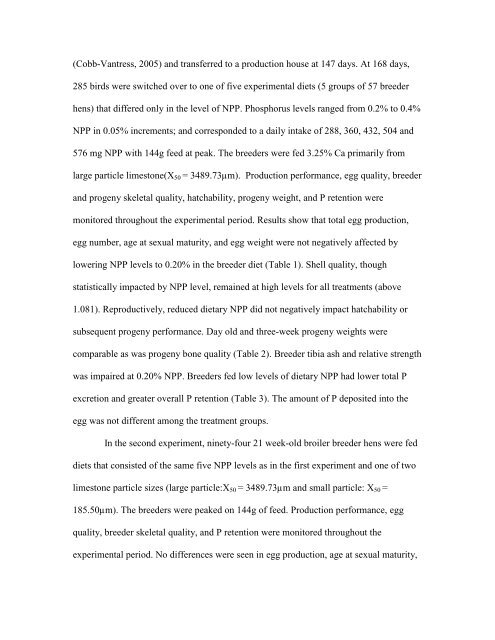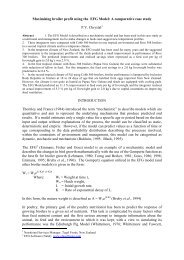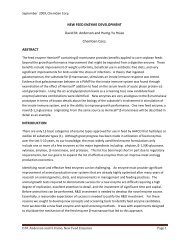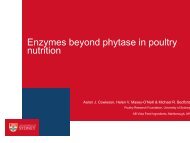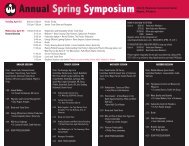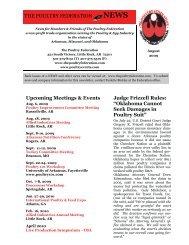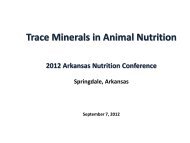Phosphorus Requirements for Broiler Breeder Hens - The Poultry ...
Phosphorus Requirements for Broiler Breeder Hens - The Poultry ...
Phosphorus Requirements for Broiler Breeder Hens - The Poultry ...
Create successful ePaper yourself
Turn your PDF publications into a flip-book with our unique Google optimized e-Paper software.
(Cobb-Vantress, 2005) and transferred to a production house at 147 days. At 168 days,285 birds were switched over to one of five experimental diets (5 groups of 57 breederhens) that differed only in the level of NPP. <strong>Phosphorus</strong> levels ranged from 0.2% to 0.4%NPP in 0.05% increments; and corresponded to a daily intake of 288, 360, 432, 504 and576 mg NPP with 144g feed at peak. <strong>The</strong> breeders were fed 3.25% Ca primarily fromlarge particle limestone(X 50 = 3489.73µm). Production per<strong>for</strong>mance, egg quality, breederand progeny skeletal quality, hatchability, progeny weight, and P retention weremonitored throughout the experimental period. Results show that total egg production,egg number, age at sexual maturity, and egg weight were not negatively affected bylowering NPP levels to 0.20% in the breeder diet (Table 1). Shell quality, thoughstatistically impacted by NPP level, remained at high levels <strong>for</strong> all treatments (above1.081). Reproductively, reduced dietary NPP did not negatively impact hatchability orsubsequent progeny per<strong>for</strong>mance. Day old and three-week progeny weights werecomparable as was progeny bone quality (Table 2). <strong>Breeder</strong> tibia ash and relative strengthwas impaired at 0.20% NPP. <strong>Breeder</strong>s fed low levels of dietary NPP had lower total Pexcretion and greater overall P retention (Table 3). <strong>The</strong> amount of P deposited into theegg was not different among the treatment groups.In the second experiment, ninety-four 21 week-old broiler breeder hens were feddiets that consisted of the same five NPP levels as in the first experiment and one of twolimestone particle sizes (large particle:X 50 = 3489.73µm and small particle: X 50 =185.50µm). <strong>The</strong> breeders were peaked on 144g of feed. Production per<strong>for</strong>mance, eggquality, breeder skeletal quality, and P retention were monitored throughout theexperimental period. No differences were seen in egg production, age at sexual maturity,


